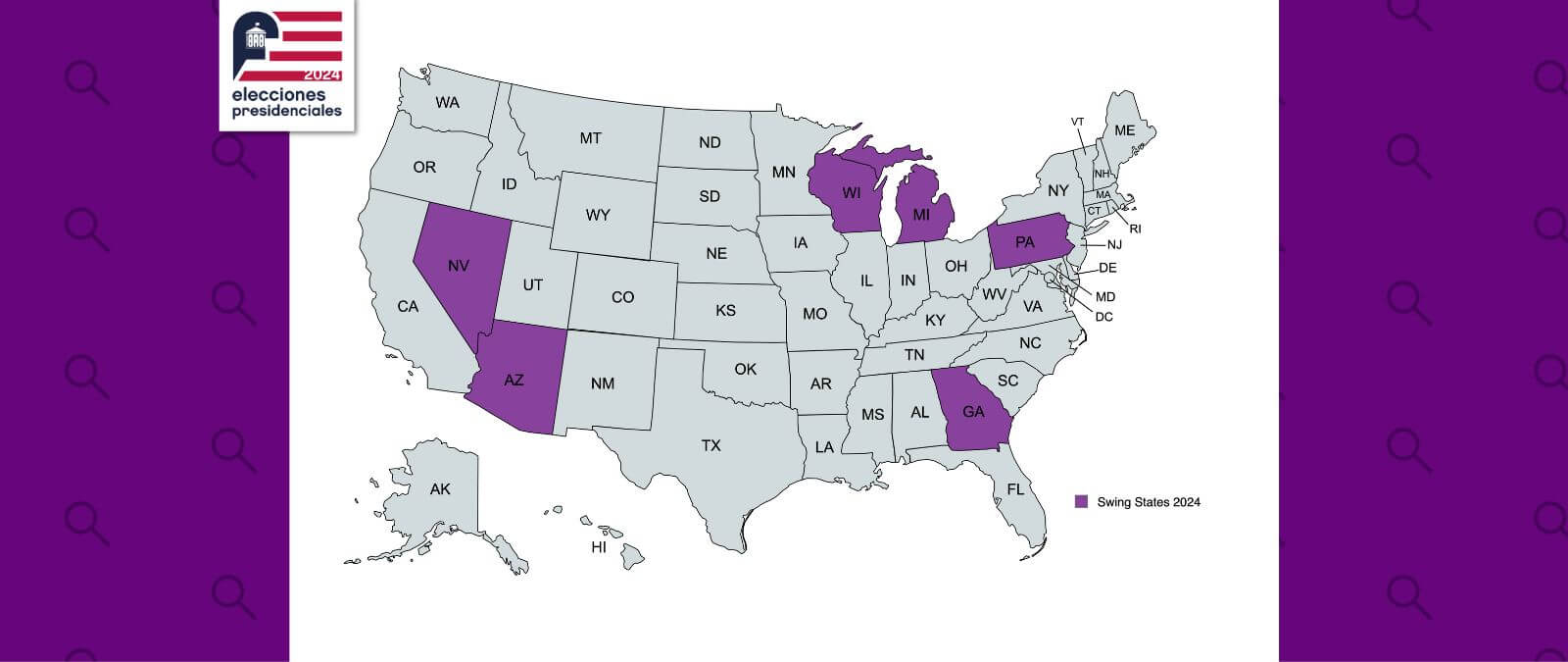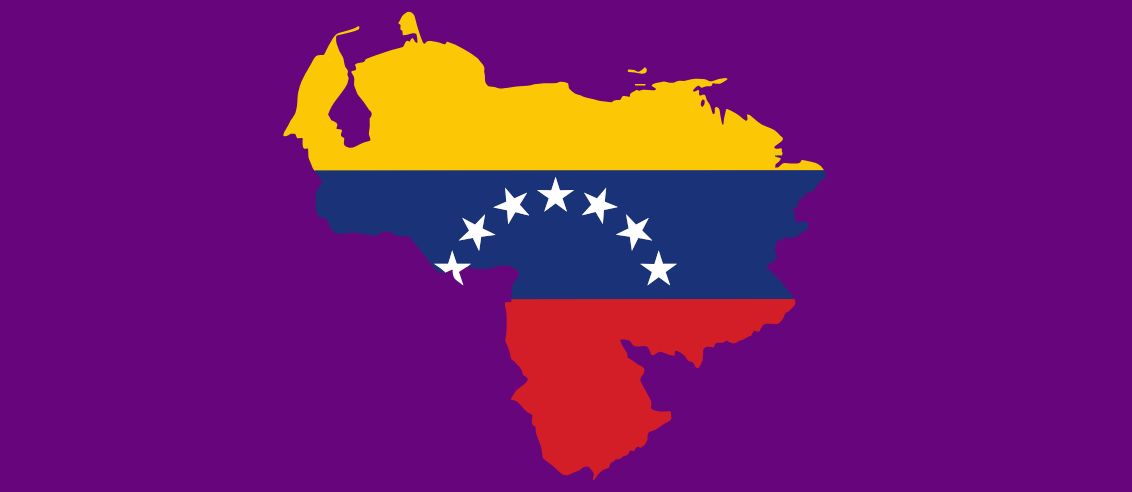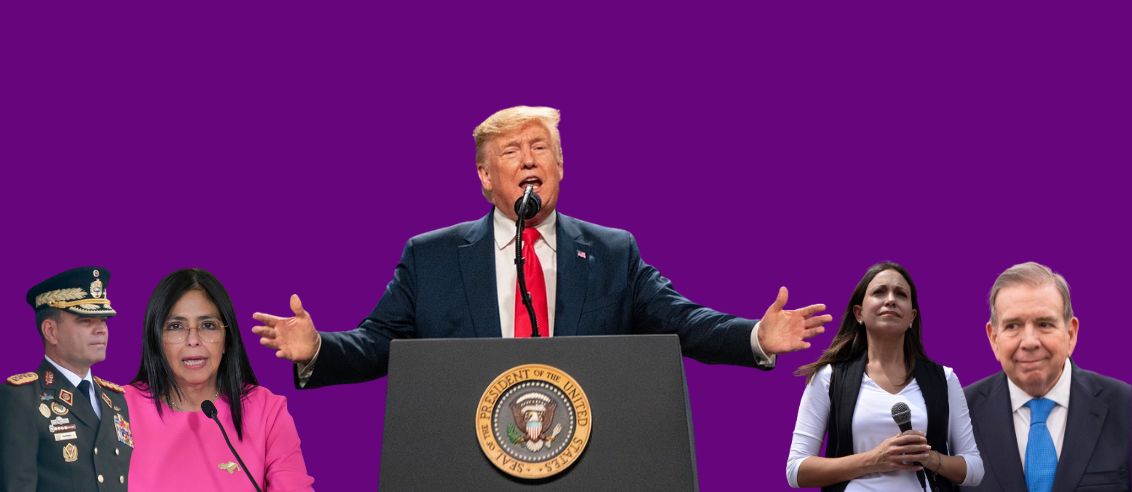Swing states are states in which both the Republican and Democrat party have similar chances of winning. The reason the word “swing” is used is because it can happen that in one election a Democrat wins, and in the following, a Republican.
Si quieres leer esta historia en español haz clic aquí
In these states, which are also called battlegrounds, the person who wins usually does it with a small margin. Since 1992, 30 states have voted at least once for the presidential candidate of the opposition party from the one they voted the previous election. Moreover, 26 of these states were won with less than 3% of the votes, according to USA FACTS, an independent organization for political news.
Which are the swing states of the 2024 presidential elections?
The answer will vary depending on who does the analysis.
For example, according to the Brennan Center for Justice, an ally organization of Factchequeado, the 2024 swing states are 6: Arizona, Georgia, Michigan, Nevada, Pennsylvania and Wisconsin. Additionally, USA FACTs and the independent organization for electoral analyses 270towin agree with this.
On the other hand, the Center for Politics of the University of Virginia published their analysis in 2023, stating that the presidential election of 2024 will be defined in Arizona, Georgia, Nevada and Wisconsin. They also predict that the Democrat Party has more chances of winning in Michigan and Pennsylvania.
In the next couple of months, there will also be polls focusing on the swing states. For example, in November 2023, The New York Times published a poll in which Donald Trump was chosen over Joe Biden in all swing states except Wisconsin. However, in January 2024, a poll by Bloomberg/Morning Consult showed Biden would be elected over Trump in the swing states if the former President was proven guilty of any of the criminal cases he is facing.
Why do we say that swing states define who will win in 2024?
Because each party has its “guaranteed” states.
For example, California is considered a “blue” state, meaning that Democrats normally win by a lot. In the 2020 presidential elections, Biden won in California with 63.5% of the votes.
On the other hand, Alabama is a “red” state because Republicans normally win there. In 2020, Trump won in Alabama with 62.2% of the votes.
But these are not the only ones: between 2000 and 2016, 38 states have voted for the same party in all presidential elections, according to an analysis from National Popular Vote, a nonprofit organization that encourages the elimination of the Electoral College system in the United States.
Now see the results of swing states in 2020: Biden won in Pennsylvania with 50% of the votes, while Trump got 48.8%. In Wisconsin, Biden won with 49.4% of the votes, while Trump got 48.8%. In Georgia, Biden won over Trump by a difference of only 0.3%.
That is why the focus is on the swing states. These states defined the election of Biden over Trump by a very small margin. In 2024, these states will also be the ones that define which candidate gets the 270 votes needed to win the presidency.
How do swing states originate?
John Hudak, expert on Governance Studies and electoral campaigns, explained in The History Channel the fundamental socio-political conditions that help consolidate these states.
Demographic changes: Rural areas normally vote for the Republican Party, according to investigations from The Pew Research Center. Consequently, when Democrat voters, who mostly live in coastal states, move to small cities, there can be a change in the balance between parties.
Ideological polarization: Since 2000, ideological divisions have grown in the United States, according to the Pew Research Center. John Hudak, expert on Governance Studies and electoral campaigns, explains that when coalitions inside political parties are fragmented, consequently, some states can either become or stop being swing states.
Swing voters: Finally, Hudak says that as more swing voters are located in a state, it becomes more difficult for any of the two parties to have a clear leverage over the other in electoral results.
Factchequeado is a verification media outlet built by a Spanish-speaking community to tackle disinformation in the United States. Do you want to be part of it? Join us and verify the content you receive by sending it to our WhatsApp +16468736087 or to factchequeado.com/whatsapp.







